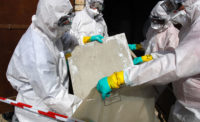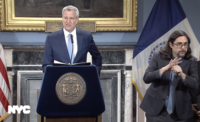Legislation similar to a potential New York City law requiring retrofitted sprinklers in all residential buildings with four or more units, which was proposed after a fatal fire at Trump Tower, has already been enacted in cities from New England to the West Coast. More importantly, says National Fire Protection Association division director Robert Solomon, the laws save lives and also have been efficient to implement.
“If you’re in a building with sprinklers, your chances of dying approach zero,” Solomon says. In Boston, which has a retrofit rule for all high-rises including residential structures, people in one building were displaced from their units for just two days, he says, because workers came in ready with precut piping and blueprints to all the apartments.
The proposed NYC law could mean lots of work for contractors. Joseph Soldevere of the NYC Buildings Dept. estimates some 209,000 existing residential structures would require retrofitting if the law is passed.
Solvedere notes the city “has long had some of the most robust fire-safety codes in the world” for buildings. But even if apartments utilize fire sensitive construction to prevent flames from spreading, Solomon points out, “compartmentation doesn’t help someone in the [on-fire] unit.”
Trump Tower was built in the 1980s under the 1968 building code. Back then, sprinklers weren't required on the 50th floor, which was where art dealer Todd Brassner died inside his apartment during the April 7 fire.
Now the code, which was updated in 2008 and again in 2014, requires sprinklers in all new residential buildings of three stories or more, says Solvedere. New commercial towers have been required to have sprinklers since 1984, but starting in July 2019, sprinklers will be mandated in all commercial buildings, new or old, he says. The new law, if passed, would do the same for residential buildings.






Post a comment to this article
Report Abusive Comment